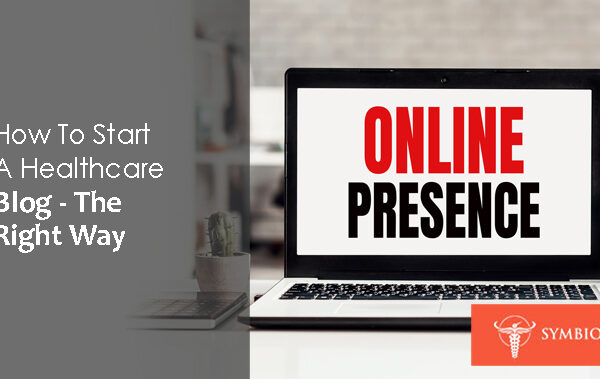
If you’re in private practice as a healthcare provider, chances are you’ve already encountered a dissatisfied patient or two.
The way that you communicate with your patients and work to resolve their dissatisfaction can have a direct influence on the success of your private practice.
Therefore, knowing how to effectively deal with a dissatisfied patient is an important factor in owning a private practice.
At Symbiosis, we’re a medical coworking space dedicated to helping you start, and thrive, in your own private practice.
So, we’ve put together a list of helpful tips for dealing with dissatisfied patients in your private practice.
Keep reading to learn more.
Start Putting A Plan Together Now – For You And Your Staff
It is inevitable that your private practice will experience, at the very least, a few dissatisfied patients.
So, it is much better to be prepared with a plan beforehand than to be unprepared when the inevitable happens.
You should start by creating policies and procedures that outline clear steps to take in order to resolve patient dissatisfaction.
Make sure all your staff is aware of these policies and procedures.
At the same time, there may be situations where rigidness to procedure does more harm than good.
Therefore, your policies and procedures should be flexible enough to account for such situations.
Additionally, give your staff the authority to quickly resolve patient complaints independently whenever possible.
Finally, when hiring support staff for your private practice, be sure that part of the interview process includes assessing their ability to be patient and understanding when dealing with a dissatisfied patient.
Recognize The Early Signs Of Frustration
According to research, people who are dissatisfied with their experience at a private practice will often silently leave the practice instead of complaining.
Therefore, it’s important that you become familiar with the early signs of frustration to prevent business loss.
One of the ways you can do this is by putting yourself in your patients’ shoes to better understand their feelings.
You should also ask about their needs and satisfaction with their care.
Some of the early signs of frustration to notice in your patients may include:
- Tapping their fingers or feet
- Lack of eye contact
- Giving short one or two word answers to questions
- Sighing
- Visible tension in their forehead
- Frequently looking at the door
- Seeming anxious to leave
It’s important to note that these might also be signs of a condition your patient may have, such as autism spectrum disorder or restless leg syndrome.
So keep that in mind when assessing whether or not these are actually signs of frustration or another condition.
Keep Your Cool
Despite the situation, it is extremely important that you remain calm in all interactions with your patients.
Remaining calm, polite, and empathetic does wonders for helping diffuse stressful or tense situations.
It can also help you build trust with your patients, which helps them to view you as an ally who’s working for their best interests rather than an adversary working against them.
Practice Active Listening
Strive to listen actively in all interactions with your patients.
Active listening involves listening with more than just your ears.
Your body language should also be showing that you are carefully listening.
For example, nod to show you understand with your patients are telling you.
Avoid things like crossing your arms or looking at your watch.
Reflecting on what your patient has said is also an important factor for active listening.
For example, ask questions or restate the problem to demonstrate your understanding.
Be sure to withhold judgment one way or another when practicing active listening.
Your goal is to understand, not to rebut.
Acknowledge Their Feelings And Apologize
Before anything else, you should always start with an apology.
Apologizing for your patient’s dissatisfaction immediately lets them know they have your attention.
By beginning the interaction with an apology, you are setting the stage for a positive conversation that works towards a solution.
Do your best to apologize for something specific, rather than just a general apology – this shows that you’re paying attention.
Explore Potential Solutions Based On Their Needs
Don’t wait to explore solutions with a dissatisfied patient.
The longer a patient is left without a solution, the more dissatisfied they will become.
Therefore, promptness is extremely important when dealing with a dissatisfied patient.
Every patient is unique and will need different solutions based on their unique needs.
Often, a dissatisfied patient already has an idea of the solution they would like to see happen.
So, begin by asking the patient if they have a resolution in mind.
Sometimes, the issue can be resolved with a simple solution.
For instance, a patient who is dissatisfied with their current provider may just need to be transferred to another provider within your practice.
If the patient doesn’t have a resolution in mind, you may suggest options for them to consider.

Learn From The Experience
Every time your practice encounters a dissatisfied patient, you should take time to reflect on the perspective of the patient to consider how your practice might learn from the experience.
Don’t assume that all patient complaints are unfounded.
Sometimes, complaints from dissatisfied patients hint at genuine problems in your practice that are in need of long term solutions.
Therefore, you should avoid becoming defensive and instead consider how to adjust and improve to resolve the situation.
Book A Call With Symbiosis To Start Your Own Healthcare Practice Today
Starting your own healthcare practice is hard work.
But you don’t have to go through it alone.
At Symbiosis, we want to help you build a successful private practice.
Don’t hesitate to reach out.
Book an appointment with Symbiosis today to get started.
1331 H St NW Ste 200,
Washington, DC 20005
(202) 794-6820
– https://goo.gl/maps/Xw6ezHdx53iDi8T98
Our Practice In A Box solutions take all the headaches out of opening and scaling your own private practice. We provide the clinic medical coworking space, operations, management, and more. Do what you do best – practice medicine – and leave the rest to us. From start to finish, we make sure your business is ready and thriving. This is what makes Symbiosis the smarter choice.





